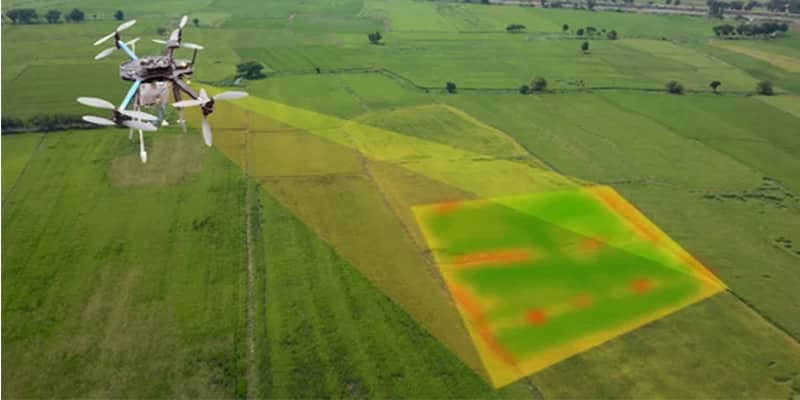Sky-High Innovations: How Drone Surveying is Transforming Construction

In recent times, drone surveying has emerged as the game-changer in the construction industry, ushering in a new era of performance and precision. While construction projects develop complexity and range, the demand intended for innovative technologies that will streamline operations plus enhance data precision is never more essential. Drones, equipped together with advanced mapping in addition to imaging capabilities, will be transforming how surveyors gather data, assess sites, and deal with projects, reshaping classic methodologies.
Drone technology is definitely not just the passing trend; it is revolutionizing the way professionals inside the construction field function. With the ability to quickly catch high-resolution aerial symbolism and produce comprehensive topographical maps, drones are proving being indispensable tools. They feature insights that once took weeks to collect, permitting faster decision-making and improved job management. As many of us delve deeper in to the benefits associated with using drones for surveying, it turns into evident this technological innovation is here to stay, as well as its influence on construction will simply continue to develop.
Rewards and Applications associated with Drone Surveying
Drone surveying offers numerous positive aspects that are transforming the construction market. First of all, drones significantly enhance accuracy and even precision in land surveys. Traditional surveying methods can end up being time-consuming and prone to human mistake, while drones utilize advanced imaging plus mapping technologies that provide high-resolution aerial information, ensuring that stakeholders have reliable info for decision-making. This specific elevated level of accuracy not just helps in planning in addition to design but also reduces costly errors that could arise later on inside the construction method.
In addition to improved accuracy, the productivity of drone surveying is a sport changer. Drones will cover large regions within a fraction of the time it might take using regular surveying techniques. This specific rapid data collection allows construction teams to assess sites quickly, leading to be able to faster project duration bound timelines and improved resource management. By dramatically reducing how much fieldwork required, drones help to streamline businesses, allowing teams to pay attention to critical tasks that will matter most to be able to project success.
Furthermore, typically the applications of drone surveying extend further than just construction. Drones are being used in varied areas such like agriculture, environmental overseeing, and disaster management. For read the full info here , gardening specialists utilize drones to assess crop into the optimize makes, while environmental firms monitor ecosystems plus track changes inside land use. Inside disaster recovery, drones provide vital aerial assessments that help in planning and even rebuilding efforts. The particular versatility of drone technology blurs typically the lines between industries, highlighting its crucial role in modern surveying practices.
Comparative Research: Drones vs. Traditional Surveying
Traditional surveying procedures often rely about ground-based equipment and manual measurements, which usually can be time consuming and labor-intensive. Surveyors typically use tools such as theodolites, total stations, and leveling instruments, needing significant human insight for data series and analysis. While these methods have been proven reliable over time, they can be limited by tough terrain or environment conditions, and the particular scope of data protection is constrained by simply manpower and time available.
In contrast, drone surveying leverages modern technology to capture significant areas of land swiftly and efficiently. Drones equipped with high-resolution cams and LiDAR devices can cover substantial sites in some sort of fraction of the time it would take for standard methods. This functionality not only boosts the speed of files collection but likewise enhances the good quality of the data gathered, providing comprehensive topographic maps in addition to volumetric measurements unavailable by ground-based procedures alone. Drones might easily access hard-to-reach areas, which makes them especially advantageous in intricate construction sites.
Moreover, typically the data analysis process differs significantly between the two methods. Standard surveying often involves manual input and even computations, which can introduce potential errors and delays. Drone surveys generate huge amounts of information of which can be prepared quickly using particular software, allowing for rapid decision-making in addition to improved project supervision. This efficiency explicates to cost personal savings and enhanced efficiency, highlighting why drone surveying is significantly favored in contemporary construction and property surveying projects.

Future Styles in Drone Surveying
Since technology continues to be able to evolve, drone surveying is set for being even more superior with advancements inside artificial intelligence plus machine learning. These types of technologies will enable drones to method data in real-time, enabling quicker decision-making on construction internet sites. Automation in drone operations will also increase, making it easier to conduct surveys without extensive human involvement, thus enhancing performance and safety in the field.
One more significant trend is the integration of drones with other emerging technologies such since Building Information Building (BIM) and Geographic Information Systems (GIS). This integration may provide comprehensive files analysis, leading to an even more seamless productivity in construction jobs. Drone Surveyors Cheltenham equipped together with advanced sensors might capture high-resolution images and 3D roadmaps, feeding into systems that can simulate construction processes and even predict potential challenges before they arise.
Last but not least, as regulations surrounding drone usage always evolve, we can certainly expect increased ease of access for smaller firms and individual surveyors to leverage drone technology. This democratization of drone surveying will drive development and competition, in the end improving service high quality across the business. With ongoing breakthroughs, drone surveying is poised to turn into a standard practice, enhancing accuracy in addition to reducing costs regarding construction projects worldwide.
